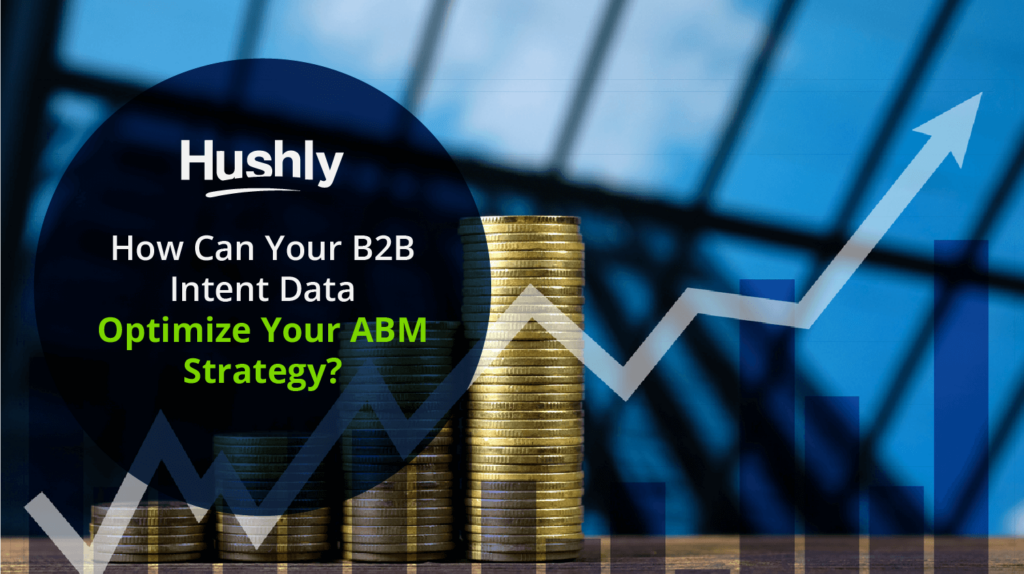Filters
Content Type
Topic
How Can Your B2B Intent Data Optimize Your ABM Strategy?
On the hunt for a way to optimize your account-based marketing (ABM) strategy? If so, you’ll want to take a look at your intent data, as it can hold an array of insightful information you can use.
Intent data is one of the most valuable tools a B2B marketer can have in their arsenal. That’s because it can tell you a lot about your potential customers, which will allow you to target them more effectively. Understanding their intent helps to shape your content, ads, and offerings. Not only that, but B2B intent data can also play a major role in developing your ABM strategy.
In this article, we’ll cover what intent data is, how to collect it, and ways it can be factored into your account-based marketing strategy. This way, you’ll be able to set your company up for success.

What is B2B Intent Data?
First, let’s go over what intent data is so you’ll have a clear understanding of what you’re looking for. This particular type of data is information that has been collected about a web user’s behavior. For instance, it’ll include the type of content they’re consuming online, which can provide insights into their interests.
In the B2B world, intent data will also factor in a user’s purchase intent so you can tell if and when someone is considering purchasing your products or services. This can come in handy when you want to generate more ROI and produce sales in your business. That’s because it’ll allow you to focus on nurturing those leads that are most poised to make a purchase.
Now the question is, do you know how to collect intent data? Well, there are a couple of options you can put to use here, including both first-party and third-party sources. First-party intent data is data that you have collected from your website and its content, as well as the terms people are searching to ultimately land on your site. Google Analytics can come in handy here, as it’ll show the most popular pages on your site, how long people spend on the page, etc.
Alternatively, you can use third-party B2B intent data providers that will analyze your site and the sites of your competitors to gather insights. Various tools can assist with this, so you’ll want to do some research to find the one that’s best for you.
4 Ways to Optimize Your ABM Strategy with B2B Intent Data
As mentioned, B2B intent data can be crucial when it comes to your company’s ABM strategy. You just need to know how to use the data once you’ve collected it. If you don’t know how to use it or you simply ignore it, it won’t serve much of a purpose. So, to ensure you’re using this data to effectively optimize your strategy, keep these tips in mind:
1. Know Which Leads to Prioritize
Intent data can help you to better understand someone’s purchase intent. This means you’ll be able to identify and target leads who are more likely to convert to a sale versus those who aren’t. For instance, if someone is repeatedly visiting your website and they’re taking some sort of action, like filling out a form or downloading something, they may be close to buying. Whereas, someone who visits your site once and doesn’t take action probably won’t make a purchase.
With a traditional sales funnel, you’re casting a wide net to attract tons of leads to your business. Then, they’re qualified as they move through the funnel. But with an ABM strategy, you prioritize those who are already close to making a purchase. This way, you simply need to nurture and build those relationships to get them to take that final step with your company.
Going about it this way prevents you from wasting time and resources on leads that are simply never going to convert. When you know someone is close to making a purchase, it’s worthwhile to focus on nudging them closer, as opposed to starting from the beginning with a brand-new lead.
2. Use Website Personalization to Deliver Tailored Messaging
If you’re a B2B company, then you know account retention is key to your long-term success. And one of the best ways to keep your accounts engaged is by delivering tailored content that addresses their specific needs. This can easily be done through website personalization, which is when you display custom content or landing pages based on their individual preferences and interests. Website personalization can also come in the form of interactive chatbots or offerings based on someone’s geographic location.
To create that personalized content, you can’t just guess what someone would be interested in seeing from your company. You’ll want to use B2B intent data to learn about their behavior and their interests. Once you’ve collected that information, you can use it to craft tailored content accordingly.
3. Know What Kind of Content to Provide and When
With the help of B2B intent data, you’ll have a clear understanding of what your prospective customers are searching for. That’s because you’ll see the terms they’re searching for to land on your site. And you’ll see which pages are getting the most traffic, indicating their popularity. This will be a good indicator of their interests and their pain points.
You can then use this data to map out a content strategy that’s aligned with your sales funnel. Then, you’ll have tailored content being presented to them at every stage of the buyer journey. This will make building a connection easier, which is going to ultimately help drive conversions. You need to match your leads with the right content.
Another way intent data can enhance your content is that it’ll make it easier for you to conduct keyword research. Google Analytics will show some of the keywords and phrases that people are searching, which led to them discovering your site. You can then use those search terms as keywords for upcoming content. This way, it’ll ensure you have optimized content that stands a better chance of ranking high.
4. Anticipate Future Needs
For your company to succeed, you need to always anticipate the future needs of your customers. This enables you to be there with the right message at the right time. Plus, it’ll allow you to get a head start on your competitors who may not be thinking about the future just yet. And when you’re one step ahead of them, you’ll be more likely to secure the sale.
B2B intent data plays an important role here because it’ll present you with tons of valuable information on your audience. You’ll learn about the topics they’re researching and what they’re most interested in. This can even help you discover what their biggest pain points are, which gives you the chance to develop products and services as a solution.
Use B2B Intent Data to Create a Tailor-Made Experience
How would you like your website to deliver a truly unique experience that allows you to stand out from your competitors? Well, you just need to implement website personalization! This strategy allows you to provide your audience with custom content based on their interests and preferences. Creating a special experience like this will leave your audience feeling satisfied and more likely to come back in the future.
If you want to learn more, schedule a personal demo with the team at Hushly.
The post How Can Your B2B Intent Data Optimize Your ABM Strategy? appeared first on Hushly.



